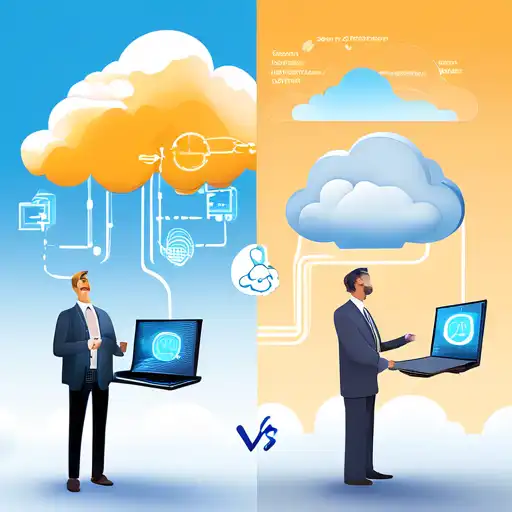Introduction to Edge and Cloud Computing
In the rapidly evolving world of technology, understanding the differences between edge computing and cloud computing is crucial for businesses and individuals alike. Both technologies play pivotal roles in data processing and storage, but they cater to different needs and scenarios.
What is Cloud Computing?
Cloud computing refers to the delivery of computing services—including servers, storage, databases, networking, software, analytics, and intelligence—over the Internet ('the cloud') to offer faster innovation, flexible resources, and economies of scale. Users typically pay only for the cloud services they use, helping lower operating costs, run infrastructure more efficiently, and scale as their business needs change.
What is Edge Computing?
Edge computing, on the other hand, is a distributed computing paradigm that brings computation and data storage closer to the location where it is needed, to improve response times and save bandwidth. The 'edge' refers to the geographic distribution of computing nodes in the network as opposed to centralized data centers.
Key Differences Between Edge and Cloud Computing
Data Processing Location
The most significant difference lies in where the data processing takes place. Cloud computing relies on centralized data centers located far from the data source, whereas edge computing processes data near the source.
Latency
Edge computing significantly reduces latency because data doesn't have to travel long distances to be processed. This is crucial for real-time applications like autonomous vehicles and industrial automation.
Bandwidth Usage
By processing data locally, edge computing reduces the amount of data that needs to be sent to the cloud, thereby saving bandwidth and reducing costs.
Security
Edge computing can offer enhanced security for sensitive data by keeping it closer to the source and reducing exposure to potential vulnerabilities during transmission.
Choosing Between Edge and Cloud Computing
The choice between edge and cloud computing depends on the specific needs of a business or application. Cloud computing is ideal for processing large volumes of data that don't require real-time analysis, while edge computing is better suited for applications where speed and bandwidth are critical.
Future Trends
As the Internet of Things (IoT) continues to expand, the demand for edge computing is expected to grow. However, cloud computing will remain essential for many applications, leading to a hybrid approach where both technologies are used in tandem.
Conclusion
Understanding the key differences between edge computing and cloud computing is essential for making informed decisions about technology investments. By considering factors like latency, bandwidth, and security, businesses can choose the right approach to meet their needs.
